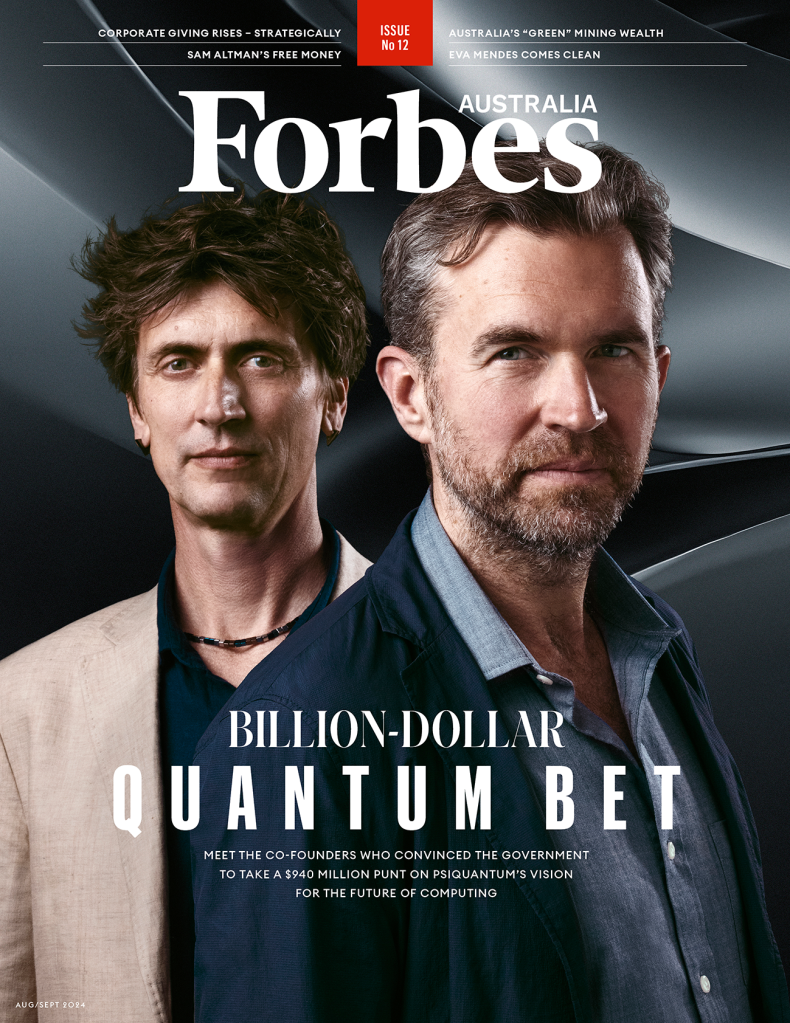A word from our Editor-in-Chief
When I was growing up in Ireland, my father used to give me puzzles to solve. I sat down to deal with them, and each time it was the usual pattern: first progress, rush to confidence, thinking I had the answer, and then – bam – a brick wall. .
This editor’s note first appeared in Issue 12 of Forbes Australia. Get your copy here.

It is at that point when the problem seems insurmountable, that many people give up and walk away. But I found the real magic happened as I pushed, looking at the problem from every angle until, finally, success and a solution clicked.
It was an important life lesson in how rewarding it is to persevere and find the right answer to a problem.
This month’s cover story reminded me of childhood puzzles. It wasn’t exactly quantum physics, but it required relentless determination, problem-solving, and an unwavering belief that the seemingly impossible could be achieved.
A $940m game
To Forbes Australiawe’ve been sharing the stories of pioneers who persevered to solve the seemingly insurmountable problem – from the BiVACOR project to implant the first artificial heart to cancer treatments guided by Telix’s core and Synchron’s AI brain interfaces.
They are very different companies from our fast-paced world of quick fixes and instant gratification. These are people who dedicate their lives to activities that can redefine our existence.
And the cover of this issue is no different.
For Jeremy O’Brien and his co-founders of PsiQuantum, their project to build the first working computer received $ 940 million from the Australian government. Considered to be worth 3.15 billion dollars in July 2023, PsiQuantum is racing to achieve this success in 2027, competing with Intel, IBM, Microsoft, Amazon, the Chinese government and a group of startups.
The ruins are huge. The first to succeed will revolutionize industries as quantum computing power performs tasks currently unimaginable for the laptops we sit on today. The possibilities are endless, from developing drug designs and improving city traffic to disrupting existing systems to incorporate and create AI with human-like abilities.
The old computer, as it has evolved, is nearing the end of its reign. We are on the brink of a new era of computing – one that is still not understood outside of professional circles.
Undoubtedly, quantum computing is dense, technical, and largely incomprehensible to the layman. But its potential? Unlimited.
Consider trying to explain the impact of the future of computers in the 1950s or the Internet in the 1980s. You would be met by ignorant people. Today, quantum computing is in a similar situation. We cannot understand its potential, but history tells us that the result can be amazing.
In our cover story, noted investor Peter Barrett says, “Quantum computing is perhaps the most important technology since fire.” He also highlighted the grim reality of such ambitious endeavors: “You need people who really want it, badly because it’s hard, and people will kick you in the guts, and it will they are long, and if you don’t want it. “I care – it’s not going to happen.”
The PsiQuantum team embodies this spirit. They are some of the brightest minds, driven by an unwavering belief in their cause. As you read their story, I hope you find a glimmer of inspiration and maybe see your own journey reflected in their determination – and keep pushing through whatever problem you’re dealing with. see them now.
I hope you enjoy this content.
Sarah O’Carroll
Editor-in-Chief, Forbes Australia
#word #EditorinChief
